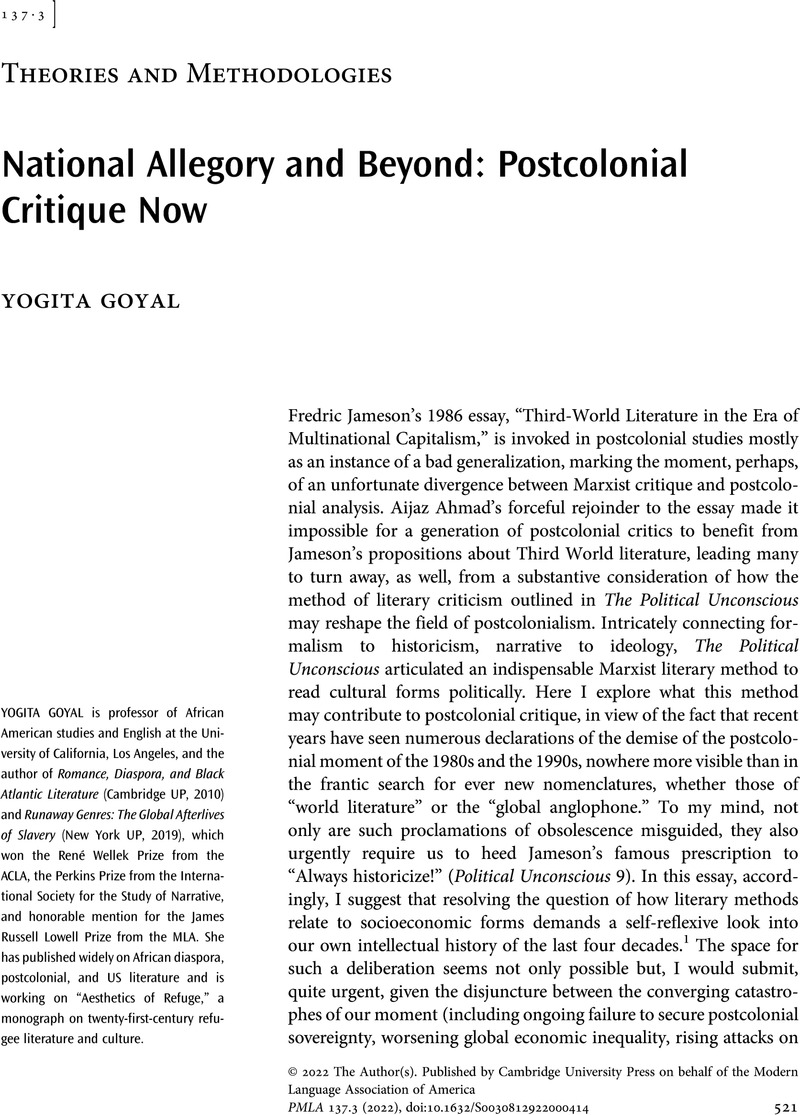Crossref Citations
This article has been cited by the following publications. This list is generated based on data provided by Crossref.
Tsang, Philip
2024.
The meanings of postcolonial critique.
Literature, Critique, and Empire Today,
Vol. 59,
Issue. 1,
p.
85.



